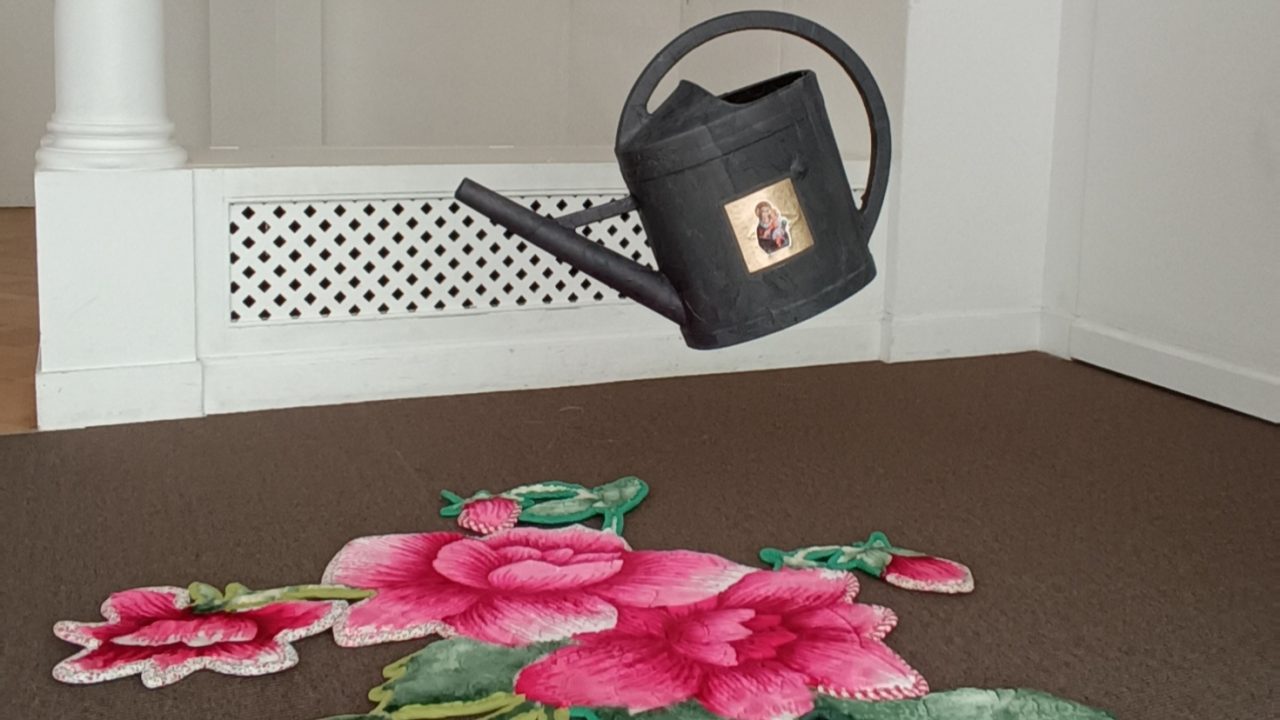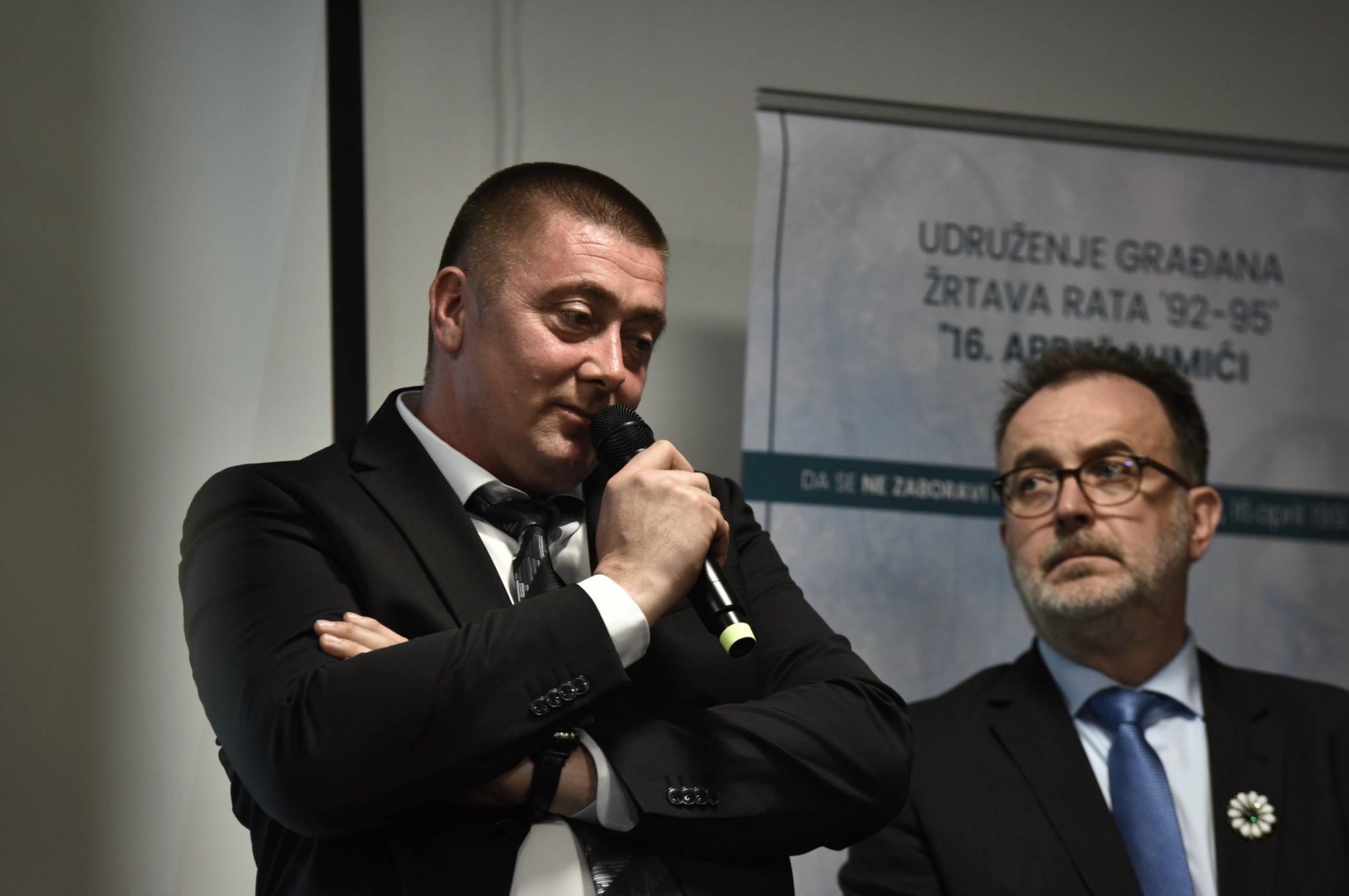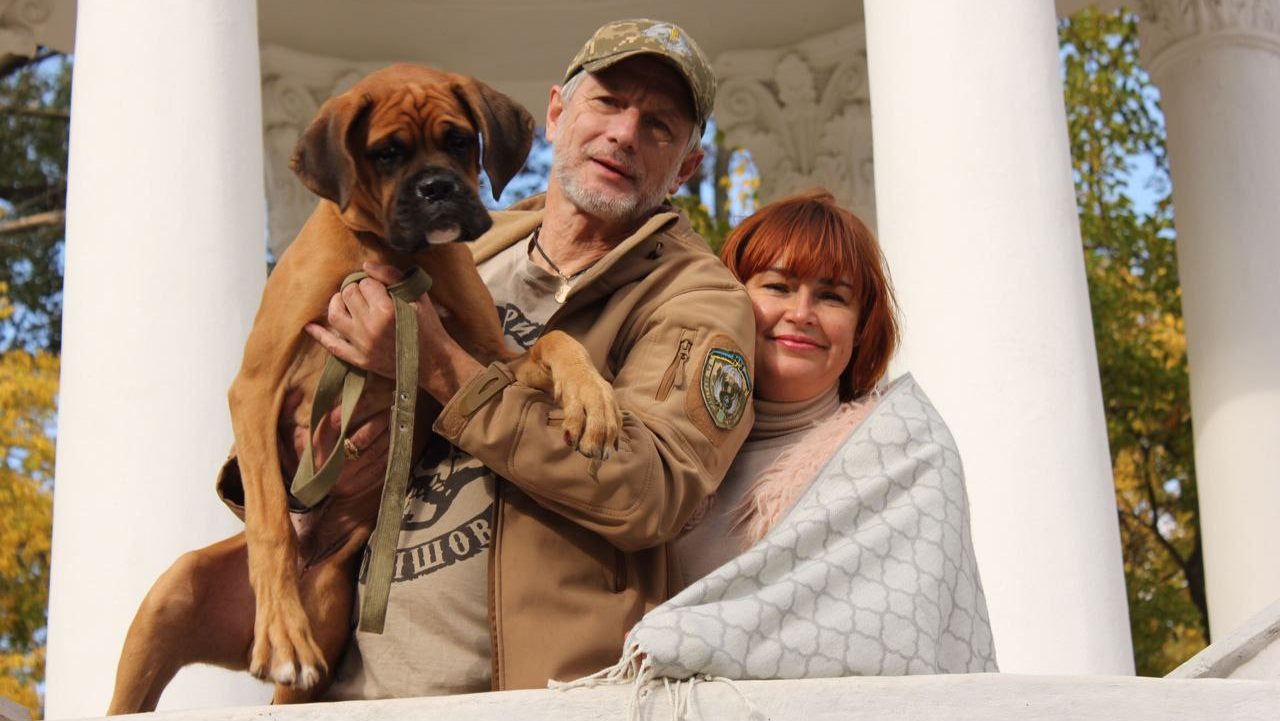This post is also available in: Bosnian
Friends told Inna Pedan about probable Russia’s attack in February 2022, but she did not want to believe it. Then one night, Inna slept in her clothes at her home in Kharkiv, as if she felt that something was going to happen. In the morning she was woken up early by explosions. It was a terrible experience, she says.
Her friend Sergiy called her the next morning and said: “Remember this day – the war has started.” For Inna, everything felt like a dream and unreal. Later her friend’s sister came and told her to quickly collect her documents and leave her home.
“We travelled from Kharkiv, there was an incredible number of cars on the road, everyone was fleeing the city,” Inna recalls. She spent a month and a half with friends and their families in a village in the Kharkiv region.
She says they were hiding, and it seemed to them that they had escaped from the city and the war.
“But the war had already become a part of our lives. We saw explosions on the horizon and heard them all the time,” says Inna, who said it was like something from a movie.
In March 2022, she made her way back home to Kharkiv, a journey she describes as “very risky” and which was accompanied by the sound of explosions. Once home, she took her computer and the hard drives that contained all her files and photographs. She picked up what she could, realising she wouldn’t be returning home anytime soon.
“I could not take everything. Where to take it? Where will I be tomorrow? Will I be alive tomorrow? My life is my art. My artworks are large. They stayed at home,” she says.
As the war progressed, news came from Bucha and Irpin about shootings of civillians, torture and rapes, and also from Kharkiv, which was constantly shelled. She felt that she should go somewhere safer, so she went to Lviv in April 2022.
Artwork dedicated to killed children
The Lviv Academy of Arts helped Inna rent a room in a house in Lviv, where her colleagues from the Kharkiv State Academy of Design and Art lived. At the time, it was considered one of the safest cities in Ukraine. There she was surrounded by people who did arts, but very soon, Inna experienced an internal conflict – caused by the perception of life in different parts of Ukraine.
She says that life in Lviv went on normally. Cafes, pharmacies, and shops were open, people were walking the streets, sitting in parks, riding bicycles and scooters, and children were running. Sometimes, in cafes, she noticed girls with tear-stained eyes.
“The conflict within me expressed itself in silence. I could not speak for a long time. I was permeated by pain and misunderstanding. It still seemed to me that all this was a terrible movie,” she says.
During the first month in Lviv, Inna just walked the city streets. She looked at buildings, watching the light in windows. Later, she bought a wooden children’s rattle, for her collection of children’s toys.
“It turned out that I did not buy it for the collection, but for myself. The toy never left my hands. It had a dry squeaking sound, which calmed down my unstable mental state,” she recalls. She realized that, just like a little child, she calmed herself with these movements, tactile sensations and sounds.
Inna explains that during war, no one can feel safe, and adults are often lost, just like little children. This is how she came up with the idea for a project titled “Lullaby” about children killed as a result of Russia’s attack on Ukraine.
Inna explains how her art is created, saying that she sees beauty in everything.
“Things and details gather on their own. It is like they are looking at me and catching my eye. First, I look at them. I arrange them. I turn them around. I observe them under different lights and their shadows,” Inna explains the technique used to create “Lullaby”.
She says that sometimes pictures come right away, and sometimes after a while.
She remembers collecting rusty metal and broken colorful glass in Lviv. At the beginning, she did not know what she wanted to do with them, but she “was just looking for beauty around her” and that was the beginning of a new creative story for her. By collecting these pieces, she felt like a primitive artist, because all her materials and tools, which she had used while living in Kharkiv for 25 years, remained at home.
When she decided to make “Lullaby”, Inna began to put up pictures from stains and pieces of rusty iron and glass. She adds that flowers were created from blue broken sharp glass, while a bear, a bird, a cat, a tractor where made up of metal. All of these details are attached to small children’s dresses and shirts from second-hand shops.
During this process, she says, she felt a distance because the creation of ready-made collage pictures did not come from inspiration, but from an enormous mental anguish.
“The hands themselves created complete compositions from small parts, and in this way, probably, I gathered myself. The process of collecting and assembling has become my therapy to survive this terrible reality and wait for positive changes,” she points out.
Artists defending Ukraine
 Priče o ratu u Ukrajini kroz umjetnost. Foto: Inna Pedan Kharkiv
Priče o ratu u Ukrajini kroz umjetnost. Foto: Inna Pedan Kharkiv
In August 2022, at the invitation of German artists, Inna spent about 20 days in Berlin, where she created two works depicting the war: Kharkiv-Berlin and Angry Flower. She says she felt that despite being abroad, the war had not disappeared, but was still inside her. Although because she was abroad, she was able to work and was more productive.
At the invitation of Nadíne Kobylko, an architect with Ukrainian roots who helps Ukrainian designers, Inna went to Paris in October of that year to live in Kobylko’s house, where she still lives today.
“I am immensely grateful to fate for my acquaintance with Nadín, who understands me as a woman, as a Ukrainian, as an artist. She feels all the pain that our country has endured and is doing a lot to help Ukrainians,” says Inna, who arrived in France with one suitcase, a small Orthdox icon and her whole life on her computer and hard drives.
In the spring of 2023, Inna’s exhibition, Lullaby performed in in ready-made, collage, art object and assemblage techniques was held in the V. Slipak Ukrainian Cultural Center in Paris at the Embassy of Ukraine, attracting much attention and praise.
The theme of the exhibition was the death of children and the future of Ukraine. Inna says it is known to her that many children have been killed by Russia in Ukraine to date, and she has dedicated Lullaby to them.
In June 2023, she participated in a large international exhibition titled Revelations. Her art installation The Birth of the Sun is about hope for a better tomorrow and light after darkness. It is almost three meters high, and was created in a month.
While she has been offered to create commercail item for royalty, Inna says she chose art because it is her obligation as an artist to express herself and continue to talk about the war in Ukraine.
After learning that a missile landed near her home in October 2023, she made a risky return in March this year to save some of her work. She recalls the horrible period of bombing, periods without electricity, during the 21 days she spent in Kharkiv.
Inna cleaned up the glass in her apartment after the explosion, and made huge boxes for works she had created between 2004 and 2014. She managed to transfer most of her works to Lviv.
Inna, who used to teach at the Kharkiv Academy before the war, continues to do so online.
“I feel I am a part of the Kharkiv art circle. I continue to teach Ukrainian students. I maintain contacts with other designers and creative people. We continue to inspire each other, to create art, to discuss our possibilities, dreams and development paths,” Inna added.
She is proud that her friends – artists, designers and poets – who she says are very brave and spiritually strong people, are defending Ukraine today.

